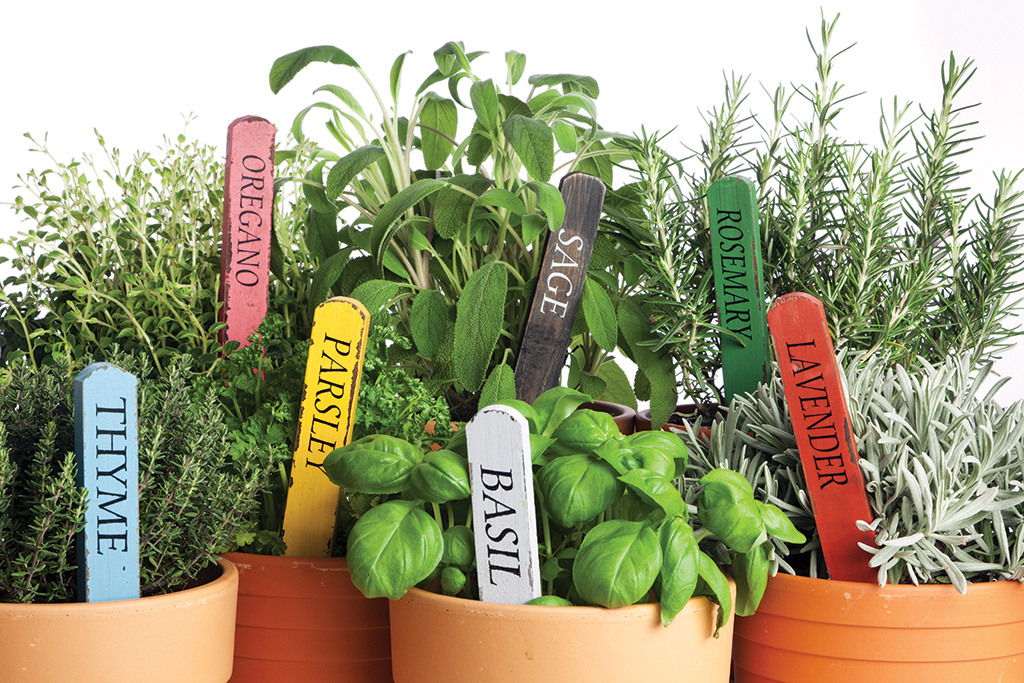Start now for year-round herbs at your fingertips
Katie Jackson
Even though the autumnal equinox on Sept. 23 was the official start of fall, that doesn’t mean you have to do without the flavors of the garden all winter. All you need is a good supply of fresh herbs, which, luckily, you can grow year-round.
In much of Alabama, many perennial herbs can continue to grow and produce leaves outdoors in the winter if they are kept in a sheltered area and if temperatures don’t drop too low for extended periods of time. What’s more, some herbs, such as cilantro and parsley, actually prefer cooler temperatures and can survive the winter outdoors if they are protected from hard freezes.
Still, there’s no predicting how harsh the winter will be, so if you want to ensure that you have fresh herbs at your fingertips all year long, now is the time to start an indoor herb garden. It may be as simple as bringing your potted herbs in for the winter, but if you don’t have some already potted up, now is the time to do so.
To establish an indoor herb garden, begin by selecting a spot in your house that provides plenty of natural sunlight (most herbs need at least six hours of light a day to thrive) and where indoor temperatures stay between 60 to 75 degrees F. South- to southwest-facing windows are the best indoor locations for herb growing, though don’t put your plants tight up against cold window glass. You can also buy a grow light to hang over the herbs if you don’t have a suitable sunny indoor spot.
Next, find a well-draining container (pot), preferably something attractive if your herb garden will be on display. You can use one large pot (strawberry pots work well for this but any large container with holes in the bottom for good drainage is fine) in which you can plant several different kinds of herbs. Or you can use smaller pots, ideally ones that are at least six inches in diameter and deep enough for the herbs’ roots to have plenty of room to grow, and plant each with a different kind of herb.
Fill the containers to about two inches from the top with fresh, sterile, well-draining potting media (pre-bagged potting mixtures specifically formulated for herbs and vegetables are good options). Now you’re ready to plant.
The most reliable way grow indoor herbs is to start with small plants, either young transplants you started from seed or cuttings or plants purchased from a garden store. You can also sew many herb seeds directly into a pot, which is particularly easy to do with cilantro, basil, dill and parsley. In fact, I often sew small amounts of these annual herbs into new containers every few weeks to keep a steady supply of young plants coming in all the time.
Once you’ve settled your transplants or seeds into their pots, apply enough water to settle the potting mixture around the plants’ roots or to moisten the soil covering the seeds. Make sure to use waterproof drip trays beneath the pots to catch excess water and protect your windowsill or table or counter tops.
As the herbs grow, turn or rearrange the pots every week or two to allow each plant plenty of access to light. Apply more water only when the first inch or so of soil has dried out. You’ll have to water germinating seedlings more frequently until they are well established, but avoid adding so much water that the potting media becomes soggy.
When your plants are established and growing, start snipping them to promote bushier growth and keep them from flowering or going to seed, though never clip more than one-third of the growth at a time. And, of course, start using them in your cooking. After all, even though indoor herbs can be lovely to behold, they are even lovelier to taste! A
[list]
OCTOBER Garden Tips
-
Collect fall leaves, seeds, cones and other garden treasures to use for seasonal decorating.
-
Plant shrubs and trees.
-
Fill bird feeders and birdbaths to attract migrating and local birds.
-
Apply compost to gardens and turn compost piles.
-
Test soil and add amendments as needed.
-
Dry and save seed from end-of-season flowers, vegetables and herbs.
-
Take cuttings of tender perennials and begin rooting them.
-
Clean and store empty pots, garden tools and equipment for the winter.
-
Plant lettuces, spinach, turnips, radishes, onions and garlic.
-
Plant a winter garden cover crop (ryegrass, clover, etc.) to protect and enrich soil.
-
Keep mowing lawns until no sign of new growth is evident
[/list]
 Katie Jackson is a freelance writer and editor based in Opelika, Alabama. Contact her at [email protected].
Katie Jackson is a freelance writer and editor based in Opelika, Alabama. Contact her at [email protected].





